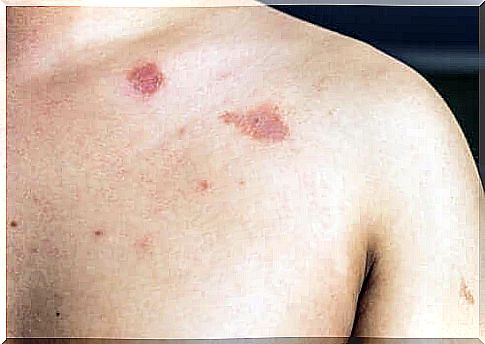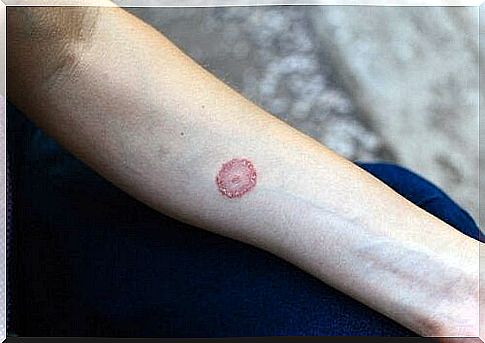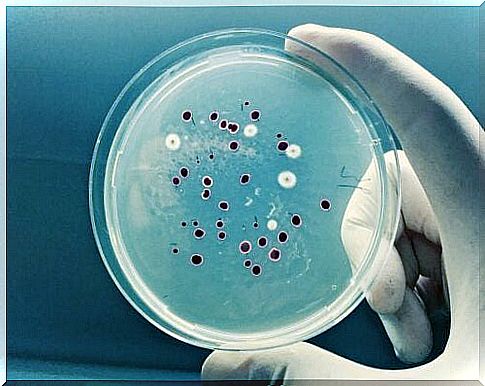What Is Pityriasis Versicolor?

The skin is the first defense front against pathogenic microorganisms; for this reason, fungal infections are one of the most frequent reasons for consultation in the field of dermatology. One such infection is pityriasis versicolor.
First, it is important to highlight that, on the surface of the skin, there are a large number of microorganisms, which are part of the natural flora. Under normal conditions, they won’t do any harm, but they can cause infections under certain circumstances.
What is pityriasis versicolor?
It is a fungal skin infection caused by a fungus of the Malassezia genus . According to some studies, the most common etiologic agent may vary depending on geographic location. In this sense, in temperate countries it is usually M. globosa , while in tropical countries it is caused by M. furfur .
Pityriasis versicolor affects all social strata equally and has a worldwide distribution, but the infection is more frequent in countries with hot and humid climates. This is because these conditions favor the colonization of the fungus on the skin.
The most affected people are usually young people, with the highest incidence peak between 20 and 40 years of age. The causative agent colonizes the skin without causing any damage, but it is able to proliferate under certain conditions and generate the disease.

What are its causes?
As mentioned, a fungus of the Malassezia genus , which is usually found on the skin, causes the infection. In fact, Malassezia furfur was isolated in 95% of areas with large amounts of sebaceous glands in different individuals.
The fungus is found in these areas because it needs lipids or fats to feed. Therefore, some factors capable of altering the skin’s fat composition will cause the microorganism to proliferate. In this way, they will increase the number of strains.
Among the situations capable of favoring the appearance of pityriasis versicolor are the following:
- Hot and humid climates.
- Excessive sweating and wearing tight clothing.
- Pregnancy.
- Oily skin.
- Corticosteroid use.
On the other hand, the deficiency of the immune system and the administration of antibiotics can also favor the appearance of the disease. Both situations affect the control mechanisms that the human body has to prevent the proliferation of pathogens.
Symptoms of pityriasis versicolor
The infection is characterized by the appearance of oval-shaped macules or spots on the skin with slight scaling on the surface. These stains may be lighter or darker than the surrounding fabric, and may vary in color from light brown, dark brown, or white.
Spots can appear anywhere on the body, although it is more common to find them on the back, neck, chest and upper third of the arm. However, there are several cases in which they appear in the skin folds, which can be confused with psoriasis.
In addition to the blemishes, the infection usually has no other symptoms, although the area may occasionally itch, especially during sweating. It is important to emphasize that pityriasis versicolor is neither painful nor contagious, but it causes great psychological discomfort in those who suffer from it.
How is the diagnosis made?
The detection of pityriasis versicolor is quite simple. Dermatologists are able to give an accurate diagnosis just by looking at the blemishes. However, the condition can be confused with other skin conditions such as seborrheic dermatitis.
Among the tests indicated for differential diagnosis, the most frequent is direct observation under a microscope. In this sense, the professional performs a scraping of the skin scales from the lesions, to which potassium hydroxide is added and the results are observed under a microscope.
On occasion, it may be necessary to indicate a culture of the specimen for the sole purpose of differentiating the types of Malassezia that may be causing the infection.

Treatments for pityriasis versicolor
As this is an infection caused by fungi, the treatment of choice is guided by the use of antifungal agents. According to medical sources, the use of specific shampoo and creams is effective in most cases. Systemic treatment should be reserved for patients with relapses and failures in the usual approach.
Regarding the topical treatment, the use of creams, gels or shampoos with ketoconazole or ciclopirox demonstrated its effectiveness. In most cases, skin blemishes usually disappear after 1 or 2 weeks. In addition, the use of 2.5% selenium sulfide shampoo is beneficial.
On the other hand, if topical treatment is not effective, the dermatologist will recommend systemic treatment. Fluconazole, ketoconazole or itraconazole can be administered orally for as long as the professional indicates.
How to prevent pityriasis versicolor?
Despite being caused by a fungus that lives on the skin, there are several measures we can take to prevent the onset of the disease. Most preventive tips aim to maintain proper personal hygiene and reduce the amount of oil on the skin.
Furthermore, it should be taken into account that pityriasis versicolor is a disease that tends to recur over time. If you have suffered from it on previous occasions, it is recommended to take oral antifungals in the warm months, with the prior indication of your doctor.









